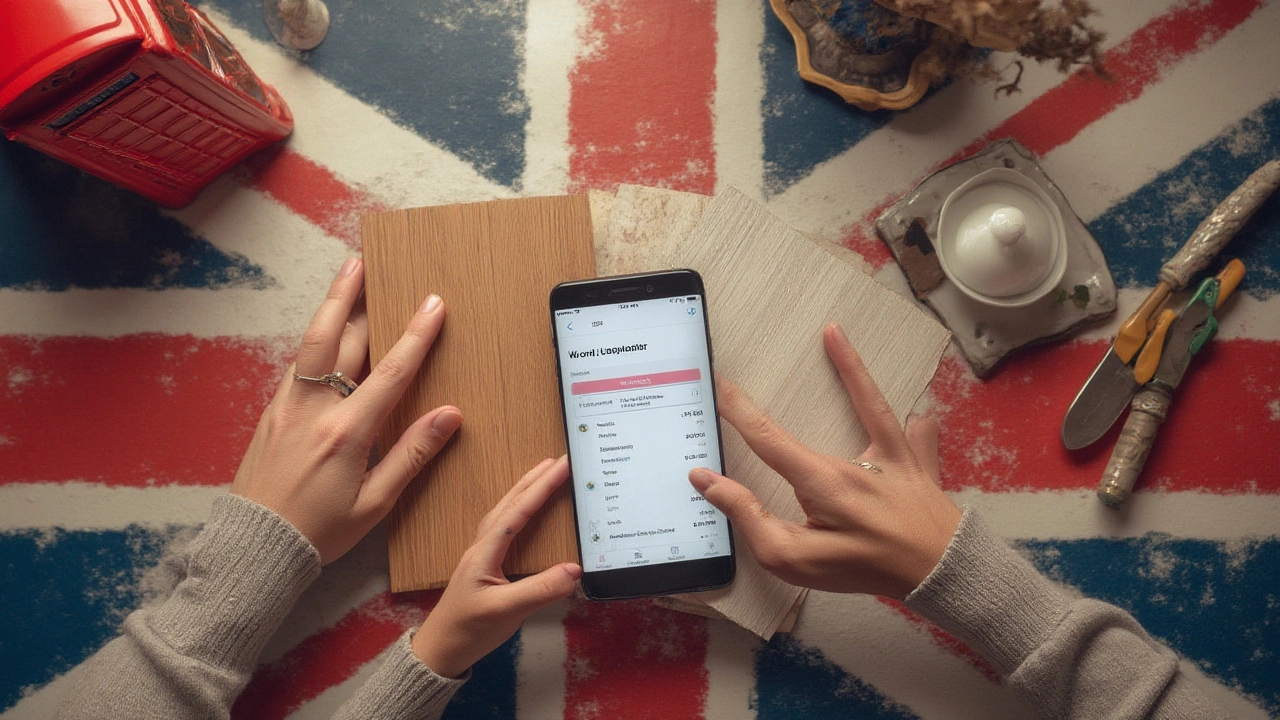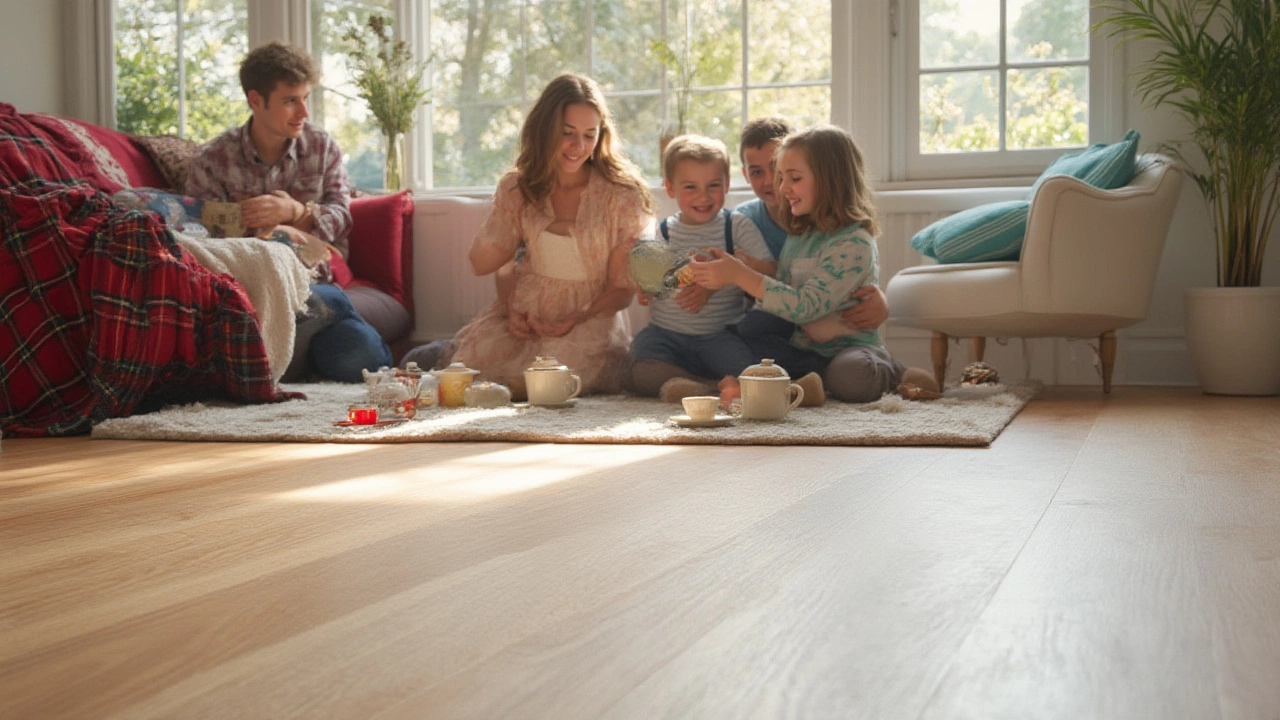If you’ve ever watched someone tiptoe across a floor and swear under their breath about the cost, you’re not alone. The hunt for reasonably priced flooring gets intense when you’ve got bills stacking up, Pinterest dreams, and a household full of muddy shoes or paws. But here's a wild truth: flooring doesn’t have to bleed your wallet dry. Surprisingly, the priciest materials—like hardwood or stone—aren’t always the holy grail of comfort or durability. There are floors out there that look gorgeous, last for years, and don't force you to skip eating out for a whole season. Let’s break down the juicy details that no one at the big-box store’s “flooring center” will mention—because you deserve floors that fit your life, not just your square footage.
The Real Price of Popular Flooring Options
Start anywhere, and you’ll hit something that claims to be “affordable”—but what actually tops the most reasonably priced flooring options? For plenty of people, it comes down to three main types: sheet vinyl, laminate planks, and ceramic tile. These dominate affordable home refreshes for a reason. First off, let's toss out some actual prices—since ‘affordable’ means nothing if it’s just a marketing trick. According to 2025 data from the National Association of Home Builders, average materials-only costs per square foot look like this:
| Flooring Type | Average Cost per Sq. Ft. (2025) |
|---|---|
| Sheet Vinyl | $1.00 - $2.75 |
| Laminate | $1.30 - $3.70 |
| Ceramic Tile | $1.50 - $6.00 |
| Luxury Vinyl Plank | $2.25 - $7.50 |
| Carpet (Basic) | $1.35 - $3.00 |
| Engineered Wood | $3.25 - $8.00 |
| Solid Hardwood | $5.00 - $15.00 |
Notice anything? Affordable flooring trends toward vinyl and laminate—perfect for tight budgets, rental makeovers, or families with kids and pets. But “cheap” doesn’t mean poor quality or boring. Brands have leveled up their game, making it so that even budget deals can look convincing next to the real stuff. Take modern sheet vinyl: it comes in roll-out sheets, needs minimal seams, and unless someone’s crawling on their hands and knees to spot the difference, most guests will be clueless it's not fancy wood or tile. You also get surprising water resistance, which makes it a real champ for retro kitchens and second bathrooms.
Now, laminate’s a curious beast. It started as the champion of budget makeovers in the 1980s and, after years of bad press for being too ‘clicky-clacky’ underfoot, it's seen an upgrade, big time. The newer rigid-core laminates come with realistic textures, fade resistance, and easy-snap installs. Laminate can be installed right over most existing floors as long as you lay down the right underlayment. And yes, you can clean it with a damp mop. Talk about family-friendly. But keep in mind, as inexpensive as it is, high-humidity spaces like saunas and laundry rooms are a no-go—unless you spring for the water-resistant versions, which often sneak outside the most affordable range.
For those who want zero worry about scratches, water, or heat, ceramic tile rarely lets you down. It’s the go-to for entryways, kitchens, and bathrooms in homes from Los Angeles to Chicago. Costs dip on the lower end if you skimp on patterns and special finishes—white and cream are always the cheapest tile colors. Pro tip: Rectangular subway tiles are trending, and manufacturers pump these out in bulk so you’ll almost always find sales. But remember, installation is the kicker. While the tile itself might run $1.50 per square foot, paying someone to lay it (perfectly, unless you love wonky grout lines) more than doubles that price. If you've got a DIY spirit, though, tile can be one of the best cheap floor upgrades around.
Now, if you’re a fan of statistics, here’s a kicker: A “Remodeling Impact” survey by the National Association of Realtors (2024) found that 61% of buyers listed updated, easy-care flooring in their top three priorities. Having a fresh but affordable floor—yes, even from budget categories—can seriously boost your resale prospects. The thing is, not all cheap flooring is equal. Each type brings strengths (and dramas!) that you’ll want to sort before swiping your card. So, let's get into the side-by-side breakdowns based on what matters most: real-life durability, upkeep, and—of course—how good it feels when you’re padding through the living room with bare feet.

How to Choose the Cheapest Flooring That Still Lasts
Here’s the real jaw-dropper: More people spend too much on flooring simply because they don’t match the material to their lifestyle. There’s no ‘best,’ only ‘best for you.’ If you have a dog that thinks indoors is a racetrack, or a teenager who uses the bedroom floor as a snack tray, your needs aren’t the same as your neighbor’s who treats the house like a museum. Start by drilling down into what these popular, low-cost floors actually offer (and what headaches they save or add).
Vinyl flooring is like that friend who never judges—spills, dropped plates, endless muddy footprints, you name it. Broadly, it breaks into two categories: sheet vinyl and luxury vinyl planks (LVP). Sheet is cheapest and quickest to install, great for covering bigger spaces with fewer seams. But if you prefer the look of individual boards (say, you’re hoping for a mock hardwood vibe), LVP still serves up affordability plus a waterproof, scratch-resistant finish. Luxury planks now use photo technology, so patterns mimic actual wood grain down to knots and imperfections. It fools the eye from standing height—which is how most of us view our floors, let's be honest.
Here’s a quick breakdown of vinyl pros and cons you won't often see on brand websites:
- Shockingly stain-proof. Pet mess? Spaghetti mishap? No problem. It wipes right off without warping.
- Easy on feet—it feels a bit softer and warmer than tile, great if you skip slippers.
- Super inexpensive to repair. Sheet vinyl rarely needs patching, but LVP planks can just pop out and be replaced.
- But… deep scratches or knife cuts can be tricky to hide (nothing’s perfect).
- Direct prolonged sunlight can fade those photo-printed designs. Curtains are your friend!
Now, laminate holds its own thanks to ‘floating’ installations—meaning no glue or nails for planks that lock together. Perfect for weekend warriors who crave instant results. The top layer, made from a resin-based compound, is tough against furniture scratches. And with proper underlayment, it’s quiet and gives a bit underfoot, different from hollow-sounding cheap laminates you may have seen in rental apartments years ago.
But every rose has its thorns:
- Loves dryness—if you live in coastal or humid climates, watch for buckling or gaps unless you splurge on moisture-resistant brands.
- Once the top wear layer is gone, there’s no refinishing. Damage often means replacement, not repair.
- The shiny finishes of ultra-cheap laminates can look fake under certain lights. Matte types hide this better.
Ceramic tile is the MVP for bathrooms and kitchens simply due to its permanence. It shrugs off water, heat, stinky accidents, and cleaning chemicals, making it nearly bulletproof in functional areas. Where it loses points for some folks is comfort—it can get chilly, and if you’re accident-prone, dropping dishes on ceramic is recipes for more breakage. Grout lines, too, collect grime if you skimp on sealing or regular cleaning.
When price is the only thing that matters, carpet often sneaks into the conversation. For basic bedrooms and low-traffic zones, a no-frills, neutral loop carpet can be found for a song at big-box stores. It’s cozy, muffles noise, and for renters, sometimes landlords will even chip in for new carpet. Downside? It soaks up everything—pet hair, spills, odors. Deep steam cleaning becomes a must at least once a year, and stains are stubborn enemies. Berber (loop pile) resists crushing better than plush, but all carpets wear out faster than hard surfaces.
Want to know a secret from flooring installers who work on their own homes? Sometimes, they’ll mix types in the same house to balance out cost and durability. Vinyl in the laundry, tile in wet baths, laminate in living spaces. By shopping sales and using remnants or clearance deals for small spaces, you might even wind up with higher-quality materials where they matter most—without blowing your budget.
Another fun fact: Flooring sponsorships on home-reno YouTube channels have caused a spike in clearance deals to clear out ‘last year’s’ colors or discontinued patterns. If you aren’t picky about color or style, you can snag 30-40% discounts compared to big seasonal sales.

Tips for Stretching Your Flooring Budget Further
If you really want your dollars to go further, here’s what the pros suggest (but rarely share with the masses):
- Shop end-of-line sales. Big retailers rotate inventory aggressively. Ask when the next clearance rolls out and pounce early.
- DIY installation saves cash. Both sheet vinyl and click-lock laminate are designed for ambitious beginners. YouTube is full of step-by-step guides. Bonus: It’s oddly satisfying.
- Reuse and upcycle. Old hardwood that’s rough-looking can sometimes be painted or covered with affordable peel-and-stick vinyl tiles, perfect for funky mudrooms or offices.
- Order 10% more than measured needs. Floors aren’t perfect rectangles. The waste from cuts, especially for tiles or planks, is a budget buster most first-timers overlook.
- Negotiate labor on small spaces. Installers will sometimes drop their minimum charge if you’re flexible on scheduling during slower seasons (right after the New Year is famously dead for flooring crews).
- Combine materials creatively. Use pricier tile or LVP just as a border or insets in high-view areas, then fill out the rest with a cheaper, solid-color option.
- Go for neutral, classic colors. They hide dust, stand up to changing trends, and boost future home value far more than wild colors or patterns.
- Look into bulk ordering or multi-room discounts. Sometimes, buying for two connected rooms can get you up to 20% off the total floor price.
Let’s tackle a common misconception: Professional installation doesn’t always eat up your savings. In some metro areas in 2025, the labor to install laminate or vinyl runs as low as $1.75 per square foot (especially if rooms are empty and you prep the base). Compare that with $6-10 for hardwood! Always get at least two quotes—sometimes, small local shops offer better package deals than national chains.
If money is so tight that your only option is DIY, then practice in a closet or tiny bathroom first. Messing up a seam in a hidden corner is a cheap lesson; doing it in the center of your living room is just heartbreak. And always check for hidden costs—removing and disposing of old materials and leveling a wonky subfloor can upend even the best-planned budgets. It’s worth it to peek under previous floors or old carpet before placing your final order.
One last boost: Think about maintenance. A floor that needs special cleaners or yearly sealants piles on hidden costs—especially with tile grout or carpets. Vinyl and laminate almost always just need sweeping and an occasional gentle mop, which can save loads of time and money each year.
Bargain flooring doesn’t mean you have to settle for dull, fragile, or “temporary” looks. Today’s budget floors hold up better, fool the eye, and are easier to install—at least, compared to the shag carpet grandma rocked in the '70s. Just shop smart, know what you need, get hands-on when it fits your skills, and remember: Sometimes, saving on floors means you can splurge elsewhere—like finally upgrading that leaky fridge or hideous bathroom light fixture.


